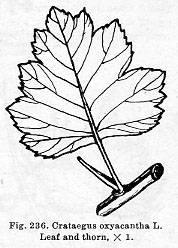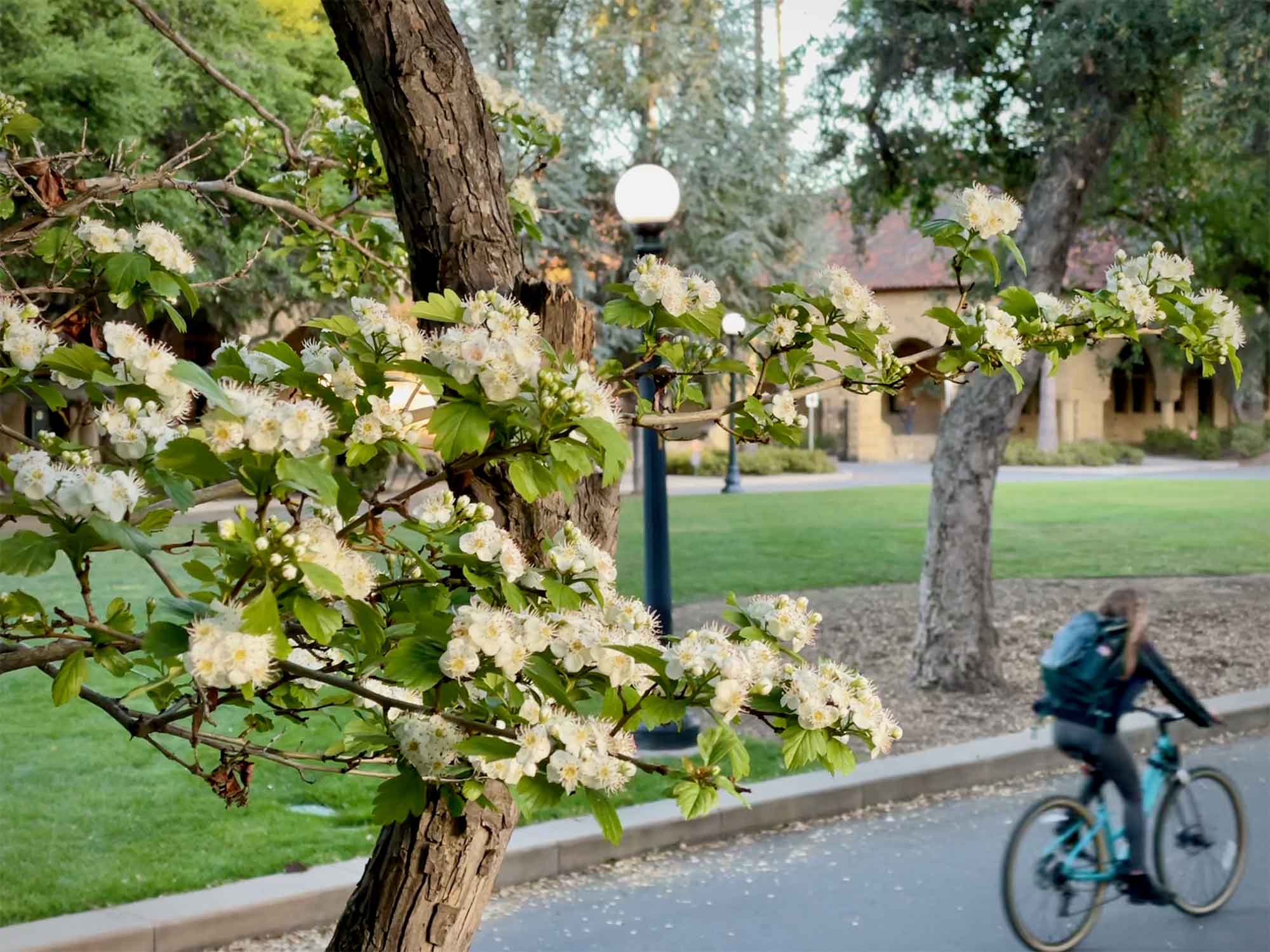Crataegus laevigata
 hawthorn
hawthorn

These small deciduous, spiny trees were popular with campus residents years ago and may be spotted in spring by their covering of flowers, generally pink and double. They are rather thorny and picking up the prunings can be a hazard. The round-lobed leaves are finely toothed, and the ¼-inch or larger red fruits contain two stones. Several horticultural varieties are available.
A pleasant row of 10 neat pollards can be seen toward the southeast end of Salvatierra Street opposite a row of 10 great magnolias, and there is one on Lomita Mall at the southeast corner of Varian Physics.
The fruits contain little edible meat, but enough to have been added to flour in Europe in World War II. As with rose hips, haws can be used for making jellies. In English, the earlier meaning of the word haw was hedge, or the area enclosed by a hedge. The related word in Dutch occurs in Den Haag (The Hague). The distinguishing feature that conveniently separates the three hawthorns we commonly encounter is the number of stones.
Name derivation: Crataegus – The Greek name from kratos (strength) referring to the hard wood; laevigata – smooth (the leaves).
About this Entry: The main text of this entry is from the book Trees of Stanford and Environs, by Ronald Bracewell, published 2005. Alternate name of C. oxyacantha removed: it is ambiguous, having been used also to refer to C. monogyna; light edits (Oct 2023, SP).




